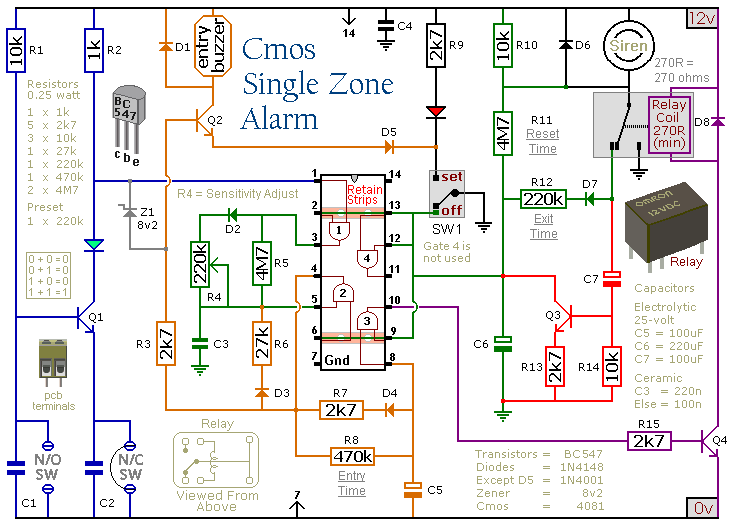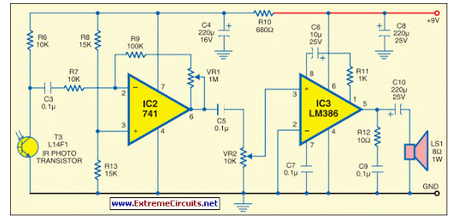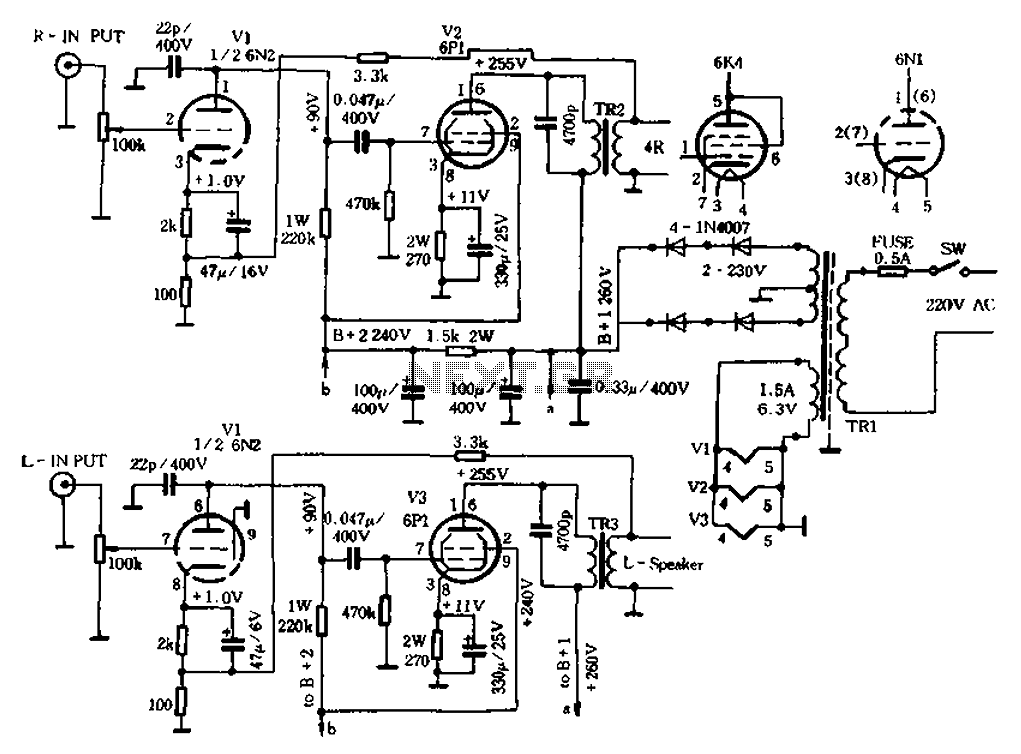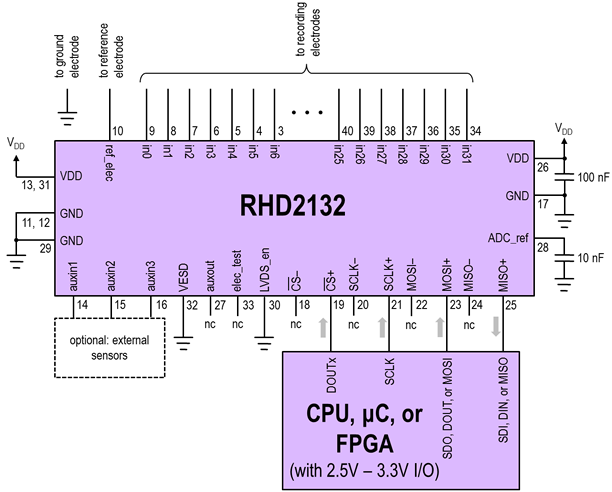
Another Small Single Chip FM Transmitter
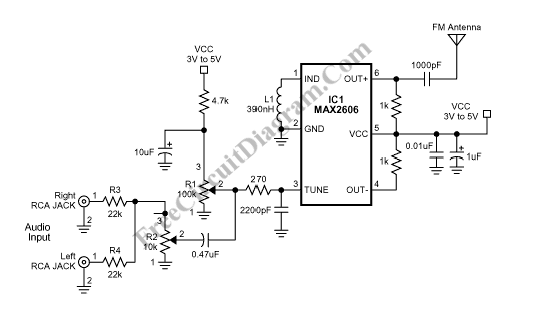
This FM transmitter circuit is compact, similar to a previous single-chip FM transmitter, but it is monophonic in nature. The circuit can be observed in the provided schematic.
This monophonic FM transmitter is designed to operate on a single frequency, making it suitable for various applications such as transmitting audio signals over short distances. The circuit typically consists of a few key components: an oscillator, a modulator, and an amplifier.
The oscillator generates a carrier frequency, which is modulated by the audio input signal to create the FM signal. This modulation is achieved using a component such as a varactor diode or a transistor configured to vary the frequency based on the amplitude of the audio signal. The output of the oscillator is then fed into a buffer amplifier to ensure that the signal can drive the next stage without distortion.
The circuit may also include passive components like resistors and capacitors to set the frequency of oscillation and to filter the output signal. An antenna is connected to the output stage to radiate the modulated signal into the air, allowing it to be received by standard FM radio receivers.
Power supply considerations are also crucial; the circuit typically operates at low voltage, often from a battery or a small power adapter, ensuring portability and ease of use. Proper layout and component selection are essential to minimize interference and optimize performance, particularly in a compact design.
Overall, this monophonic FM transmitter circuit provides a simple yet effective solution for wireless audio transmission, making it an excellent choice for hobbyists and educational projects.This FM transmitter circuit is small, similar to our previous single chip FM? transmitter, but this FM transmitter is monophonic. You can see in the circuit`s. 🔗 External reference
This monophonic FM transmitter is designed to operate on a single frequency, making it suitable for various applications such as transmitting audio signals over short distances. The circuit typically consists of a few key components: an oscillator, a modulator, and an amplifier.
The oscillator generates a carrier frequency, which is modulated by the audio input signal to create the FM signal. This modulation is achieved using a component such as a varactor diode or a transistor configured to vary the frequency based on the amplitude of the audio signal. The output of the oscillator is then fed into a buffer amplifier to ensure that the signal can drive the next stage without distortion.
The circuit may also include passive components like resistors and capacitors to set the frequency of oscillation and to filter the output signal. An antenna is connected to the output stage to radiate the modulated signal into the air, allowing it to be received by standard FM radio receivers.
Power supply considerations are also crucial; the circuit typically operates at low voltage, often from a battery or a small power adapter, ensuring portability and ease of use. Proper layout and component selection are essential to minimize interference and optimize performance, particularly in a compact design.
Overall, this monophonic FM transmitter circuit provides a simple yet effective solution for wireless audio transmission, making it an excellent choice for hobbyists and educational projects.This FM transmitter circuit is small, similar to our previous single chip FM? transmitter, but this FM transmitter is monophonic. You can see in the circuit`s. 🔗 External reference
